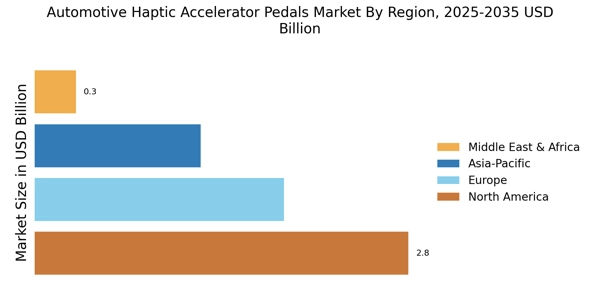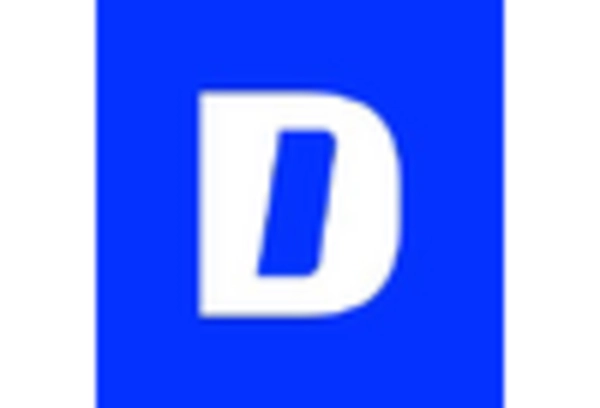Focus on Safety and Comfort
Safety and comfort are paramount in the Automotive Haptic Accelerator Pedals Market, driving manufacturers to innovate in pedal design. Haptic feedback systems can alert drivers to potential hazards or changes in road conditions, thereby enhancing overall safety. For example, a sudden change in pedal resistance can signal the driver to adjust their speed in response to road conditions. Additionally, the comfort provided by these systems can lead to reduced driver fatigue during long journeys. As consumer awareness of safety features increases, the demand for haptic accelerator pedals is likely to rise, with market analysts predicting a steady increase in sales as more vehicles incorporate these technologies.
Integration with Electric Vehicles
The rise of electric vehicles (EVs) is a pivotal driver for the Automotive Haptic Accelerator Pedals Market. As EV adoption accelerates, the need for innovative driving solutions becomes more pronounced. Haptic accelerator pedals offer a unique solution by providing feedback that aligns with the instantaneous torque delivery characteristic of electric motors. This integration not only enhances the driving experience but also aids in energy efficiency by allowing drivers to modulate acceleration more effectively. Market data suggests that the EV segment is expected to account for over 30% of new vehicle sales by 2030, thereby creating a substantial demand for haptic technology in accelerator pedals.
Consumer Demand for Enhanced Driving Experiences
Consumer preferences are shifting towards vehicles that offer enhanced driving experiences, significantly impacting the Automotive Haptic Accelerator Pedals Market. As drivers seek more interactive and engaging interfaces, haptic feedback systems are becoming increasingly appealing. These systems provide a level of customization that allows drivers to tailor their driving experience according to personal preferences. Market Research Future indicates that nearly 60% of consumers express interest in vehicles equipped with advanced feedback technologies. This growing demand is likely to encourage manufacturers to invest in haptic technology, thereby expanding the market and fostering innovation in pedal design.
Regulatory Support for Advanced Driver Assistance Systems
Regulatory bodies are increasingly advocating for advanced driver assistance systems (ADAS), which include haptic feedback technologies in the Automotive Haptic Accelerator Pedals Market. Governments are implementing policies that encourage the adoption of safety-enhancing technologies, which can lead to a more significant market presence for haptic pedals. For instance, regulations mandating certain safety features in new vehicles are likely to drive manufacturers to integrate haptic feedback systems into their designs. This regulatory support not only fosters innovation but also creates a competitive landscape where companies are incentivized to develop cutting-edge solutions that meet these new standards.
Technological Advancements in Automotive Haptic Accelerator Pedals
The Automotive Haptic Accelerator Pedals Market is experiencing a surge in technological advancements, particularly in the realm of sensor technology and feedback mechanisms. These innovations enhance the driving experience by providing tactile feedback that simulates various driving conditions. For instance, the integration of advanced sensors allows for real-time adjustments to pedal resistance, which can improve driver engagement and control. As manufacturers increasingly adopt these technologies, the market is projected to grow at a compound annual growth rate of approximately 8% over the next five years. This growth is indicative of a broader trend towards more interactive and responsive vehicle interfaces, which are becoming essential in modern automotive design.


















Leave a Comment